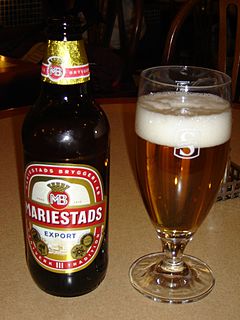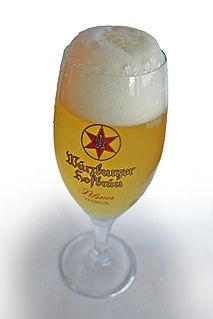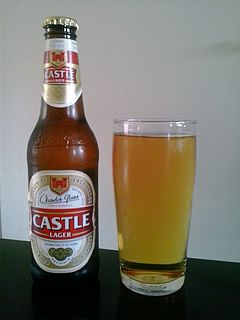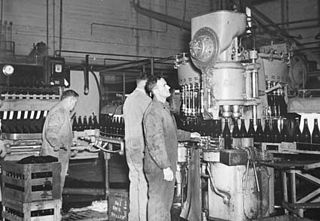This article includes a list of general references, but it lacks sufficient corresponding inline citations .(August 2011) |


Namibian cuisine is the cuisine of Namibia. It is influenced by two primary cultural strands:
This article includes a list of general references, but it lacks sufficient corresponding inline citations .(August 2011) |


Namibian cuisine is the cuisine of Namibia. It is influenced by two primary cultural strands:

In the precolonial period indigenous cuisine was characterised by the use of a very wide range of fruits, nuts, bulbs, leaves and other products gathered from wild plants and by the hunting of wild game. The domestication of cattle in the region about two thousand years ago by Khoisan groups enabled the use of milk products and the availability of meat.
Namibia was settled by German colonists during the nineteenth century, and German influence on white Namibian cookery remains very strong. One example of German settler cuisine is Wiener schnitzel .
Beer was brewed by many indigenous tribes in the territory that is now Namibia. The recipes depended on locally available ingredients and were brewed to make for instance sugar beer and honey beer. The German brewing tradition continued in colonial German South-West Africa. After it quickly proved impractical and expensive to import it from Germany, breweries were established all over the colony. However, when after World War I many Germans were deported and an economic depression set in, most breweries went out of business. [1]
German lager beers including Tafel and Windhoek lagers are still brewed in the country for domestic consumption and export.


Beer is one of the oldest and most widely consumed alcoholic drinks in the world, and the third most consumed drink overall after water and tea. It is produced by the brewing and fermentation of starches, mainly derived from cereal grains—most commonly from malted barley, though wheat, maize (corn), rice, and oats are also used. During the brewing process, fermentation of the starch sugars in the wort produces ethanol and carbonation in the resulting beer. Most modern beer is brewed with hops, which add bitterness and other flavours and act as a natural preservative and stabilizing agent. Other flavouring agents such as gruit, herbs, or fruits may be included or used instead of hops. In commercial brewing, the natural carbonation effect is often removed during processing and replaced with forced carbonation.

Beer in Sweden has a history that can be traced to the late Iron Age.

The Reinheitsgebot is a series of regulations limiting the ingredients in beer in Germany and the states of the former Holy Roman Empire. The best known version of the law was adopted in Bavaria in 1516, but similar regulations predate the Bavarian order, and modern regulations also significantly differ from the 1516 Bavarian version. Although today, the Reinheitsgebot is mentioned in various texts about the history of beer, historically it was only applied in the duchy of Bavaria and from 1906 in Germany as a whole, and it had little or no impact in other countries or regions.

Pale lager is a very pale-to-golden-colored lager beer with a well-attenuated body and a varying degree of noble hop bitterness.

New Zealand cuisine is largely driven by local ingredients and seasonal variations. An island nation with a primarily agricultural economy, New Zealand yields produce from land and sea. Similar to the cuisine of Australia, the cuisine of New Zealand is a diverse British-based cuisine, with Mediterranean and Pacific Rim influences as the country becomes more cosmopolitan.

Castle Lager is a South African pale lager. It is the flagship product of South African Breweries and has been recognised as the National Beer of South Africa, based on the fact that it is 100% grown and produced in the country, and for its ability to unite the community behind a common cause.

South African cuisine reflects the diverse range of culinary traditions embodied by the various communities that inhabit the country. Among the indigenous peoples of South Africa, the Khoisan foraged over 300 species of edible food plants, such as the rooibos shrub legume, whose culinary value continues to exert a salient influence on South African cuisine. Subsequent encounters with Bantu pastoralists facilitated the emergence of cultivated crops and domestic cattle, which supplemented traditional Khoisan techniques of meat preservation. In addition, Bantu-speaking communities forged an extensive repertoire of culinary ingredients and dishes, many of which are still consumed today in traditional settlements and urban entrepôts alike.

History of beer in Mexico dates from the Spanish conquest of the Aztec Empire. While Mesoamerican cultures knew of fermented alcoholic beverages, including a corn beer, long before the 16th century, European style beer brewed with barley was introduced with the Spanish invasion soon after Hernán Cortés's arrival. Production of this beer here was limited during the colonial period due to the lack of materials and severe restrictions and taxes placed on the product by Spanish authorities. After the Mexican War of Independence, these restrictions disappeared, and the industry was permitted to develop. Furthermore, the arrival of German immigrants and the short-lived empire of Austrian Maximilian I in the 19th century provided the impetus for the opening of many breweries in various parts of the country.

Beer arrived in Australia at the beginning of British colonisation. In 2004 Australia was ranked fourth internationally in per capita beer consumption, at around 110 litres per year; although, the nation ranked considerably lower in a World Health Organization report of alcohol consumption per capita of 12.2 litres. Lager is by far the most popular type of beer consumed in Australia.

Beer in South Africa has a long history, with a corporate history dating back to the early 20th century.
Traditionally, the various cuisines of Africa use a combination of plant and seed based, and do not usually have food imported. In some parts of the continent, the traditional diet features an abundance of root tuber products.
Beer in Africa, especially lager, is produced commercially in most African countries, and varieties of beer are also made by indigenous people. Beer is served in a range of locales, from neighbourhood shebeens to upscale bars. Many countries have standardized beer bottle sizes, which are cleaned and re-used, and so when buying beer at a store often people must pay a deposit on the bottle as well as the price of the beer. An alternative to glass-bottle beers is local beer sold in tetra-pak style paper cartons.

Beer is the most popular alcoholic drink in New Zealand, accounting for 63% of available alcohol for sale. At around 64.7 litres per person per annum, New Zealand is ranked 27th in global beer consumption per capita. The vast majority of beer produced in New Zealand is a type of lager, either pale or amber in colour, and typically 4–5% alcohol by volume.

Namibia Breweries Limited (NBL) is a Namibian brewery which is based in Windhoek, Namibia. It was founded in 1920.

The cuisine of early modern Europe was a mix of dishes inherited from medieval cuisine combined with innovations that would persist in the modern era.
Heineken N.V. is a Dutch brewer which owns a worldwide portfolio of over 170 beer brands, mainly pale lager, though some other beer styles are produced. The two largest brands are Heineken and Tecate; though the portfolio includes Amstel, Fosters, Sagres, Cruzcampo, Skopsko, Affligem, Żywiec, Starobrno, Zagorka, Zlatý Bažant and Birra Moretti.

The cuisine of the Thirteen Colonies includes the foods, bread, eating habits, and cooking methods of the Colonial United States.

Lager is beer which has been brewed and conditioned at low temperature. Lagers can be pale, amber, or dark. Pale lager is the most widely consumed and commercially available style of beer. The term "lager" comes from the German for "storage", as the beer was stored before drinking – traditionally in the same cool caves it was fermented in.

The cuisine of the antebellum United States characterizes American eating and cooking habits from about 1776 to 1861. During this period different regions of the United States adapted to their surroundings and cultural backgrounds to create specific regional cuisines, modernization of technology led to changes in food consumption, and evolution of taverns into hotels led to the beginnings of an American temperance movement. By the beginning of the Civil War, the United States cuisine and food culture could define itself separately from that of the rest of the world.